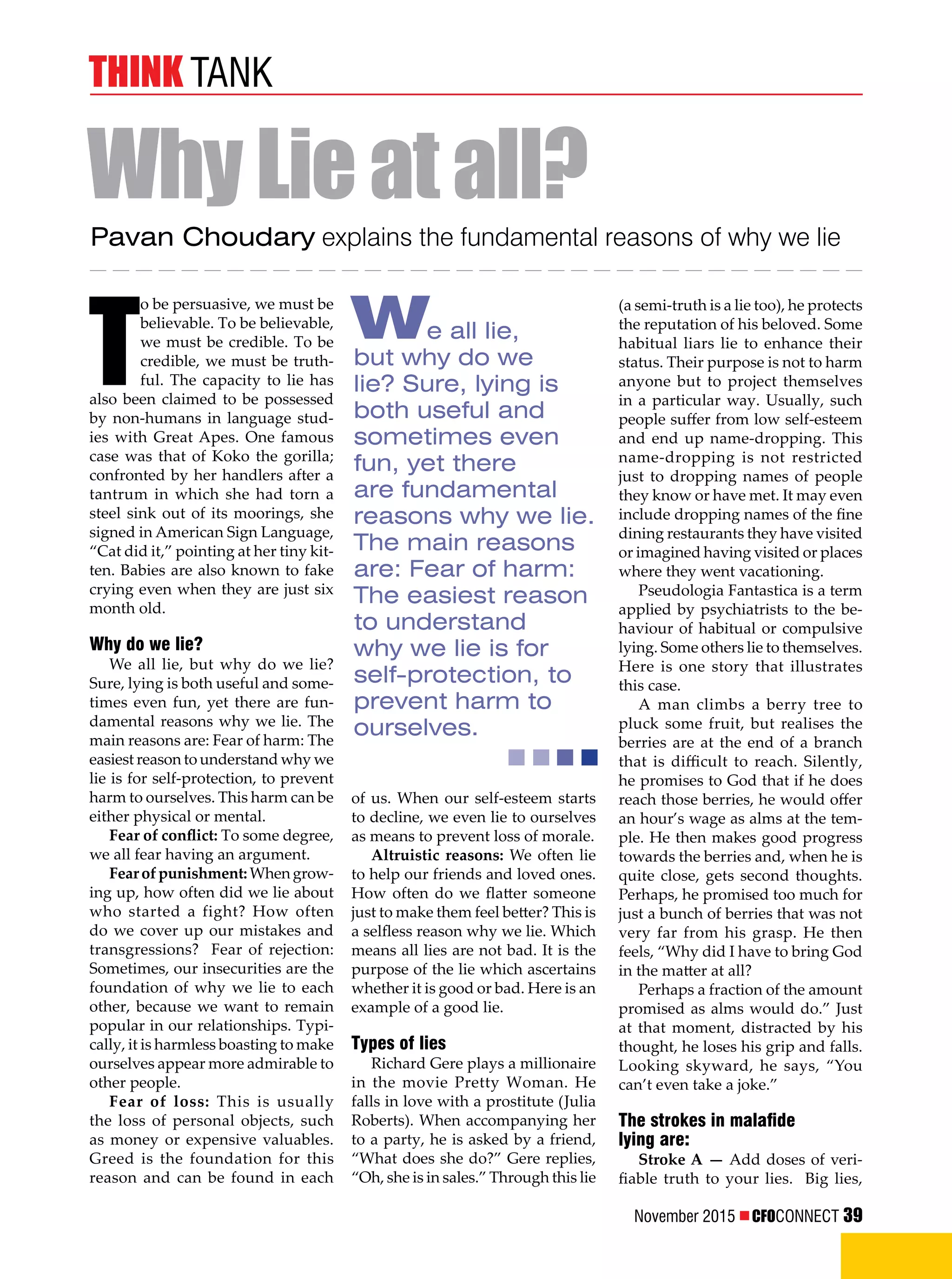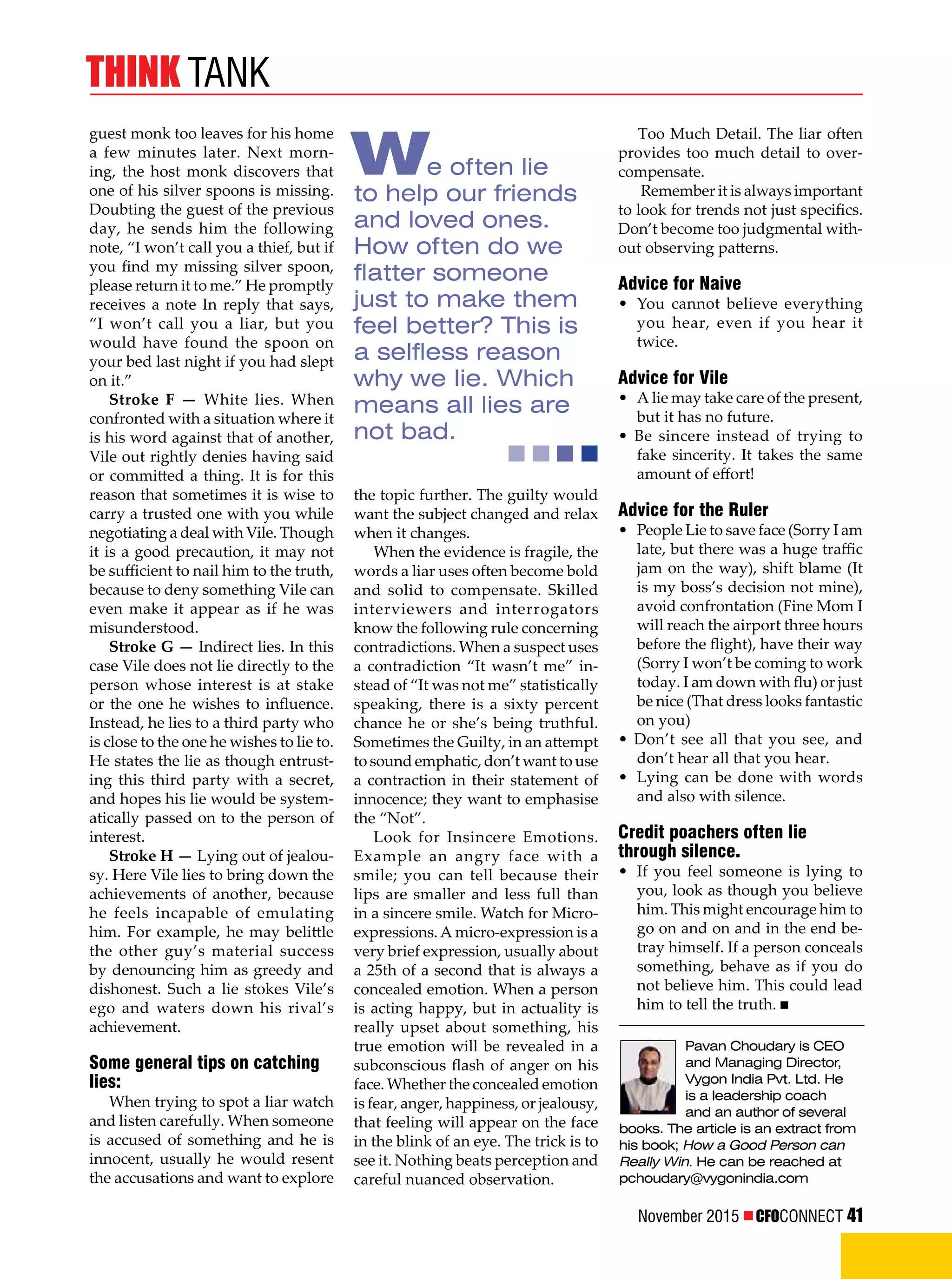The document discusses the reasons why people lie and different types of lies. It explains that the main reasons for lying are fear of harm, conflict, punishment, rejection, and loss. It also notes that sometimes lies are told for altruistic reasons to help others. The document then describes different types of lies, including pseudologia fantastica (compulsive lying), white lies, lies of omission, and indirect lies. It provides examples and advice on how to detect lies, such as looking for inconsistencies, insincere emotions, microexpressions, and too many unnecessary details. The document concludes by advising people to not believe everything they hear and for liars to be sincere rather than faking sincerity.


